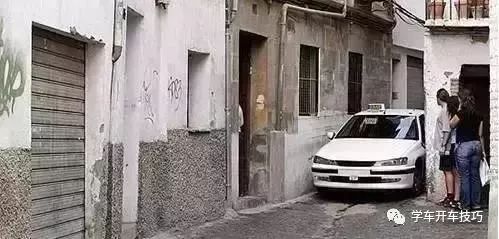When driving on the road, you often have to pass a very narrow road, or pass a width-limited gate composed of low obstacles such as stone piers and bushes, or even pass cars on a very narrow road. At this time, it is difficult for many drivers to judge whether their car can pass or not. If they are not careful or make a wrong judgment, they will leave a few large scars. It is okay to scratch themselves, but it is troublesome to scratch others. So, how can we accurately judge whether the car can pass?
1. First estimate the road and body conditions
First of all, the driver should have a rough judgment on the width of the road. Since the driver is on the left side of the vehicle, the distance on the left side must be more relaxed than that on the right side, so the vehicle can be properly attached to the left side. If we want to cross a two-meter-wide path, the width of our own body is 1700 mm, which can be passed.

2. Before the vehicle enters the narrow road, the vehicle should be straightened as much as possible
Why do you need to straighten the car body instead of passing it obliquely? In fact, the reason is very simple. If the width can be regarded as the hypotenuse of a right-angled triangle, if it enters obliquely, the width that the vehicle can pass will change from the hypotenuse of the right-angled triangle to the right-angled side. Obviously, the width that the vehicle can pass will shrink. The chances of rubbing are even greater.

3. Pay attention to the difference between the front and rear wheels
When we drive through a narrow road and need to turn, we feel that it is the front wheels that control the steering. As long as the front wheels pass the obstacle, we can turn the steering wheel. Little do we know that this method of operation is easy to cause scratches when passing through the narrow road. Therefore, when passing through some narrow doors and isolation piers, make sure that the rear wheels pass through before turning.

4. Make good use of the rearview mirror to observe the situation behind the car
Many people don’t pay attention to whether the rearview mirror can pass after the front of the car passes the road. Generally, after the front of the car passes, as long as the rearview mirror can pass, there is no problem behind it, because the rearview mirror of a car can basically cover the gap between the inner wheels. If after the front of the car passes by, you find that the position of the rearview mirror is not enough, don’t feel troublesome, reverse the car.

5. Probe observation when necessary
If you are still worried about the above methods, you can’t be lazy at this time. When you can’t make a clear judgment while sitting in the car, the simplest and direct way is to lean over and observe. Especially when meeting a car, don’t be lucky.

6. Reduce the speed
When driving in a narrow lane, slow down and increase the distance between the car and the workshop to avoid collisions with other vehicles. Especially when passing through some narrow lanes full of cars parked on the side of the road, you must drive slowly and be vigilant, because at this time there will be blind spots on the side of the road.

Written at the end: During normal driving, when passing narrow roads, you should pay more attention, drive slowly, observe more, do not be reckless, and avoid scratches.
To sum up the skills are: try to straighten the body and pass, confirm that the rear wheels have passed the obstacle before steering; Anticipate and prepare in advance to avoid scratching as much as possible.
There must be old drivers who think that the above points are pediatrics. Do the old drivers have better tricks? Welcome to leave a message~




